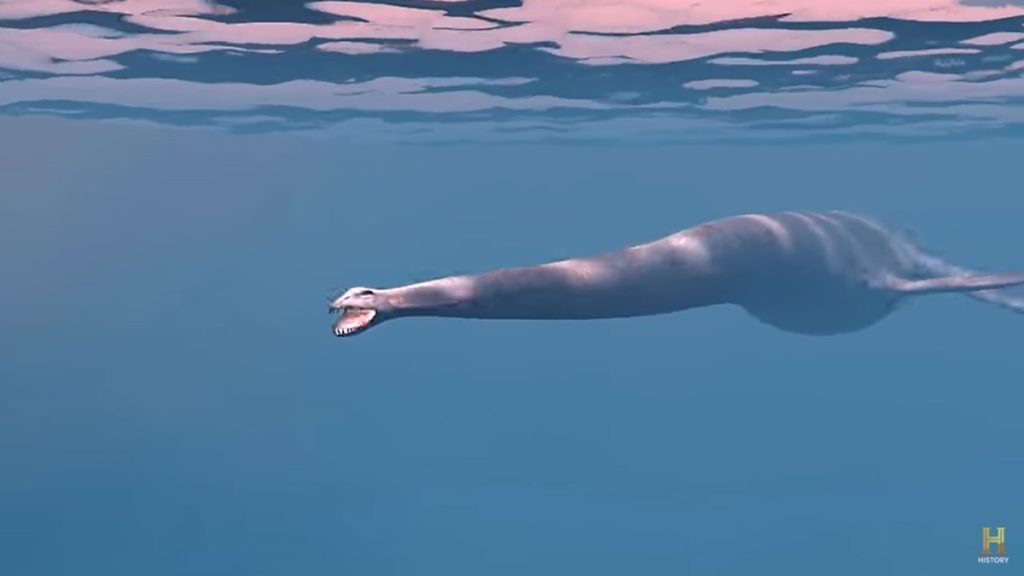
Fishermen discovered the carcass of the Stronsay Beast in 1808. Pic credit: via History Channel/YouTube
The Island of Stronsay, 190 miles northeast of Loch Ness in Orkney, Scotland, was the site of the discovery of the carcass of a marine monster in 1808.
Fishermen returning from the sea and residents walking along the shores of the Scottish island stumbled upon a 55-foot behemoth that washed up on a summer day.
Zoologist Jeff Sweeney explored the enduring mystery of the Stronsay Beast in an episode of In Search Of on the History Channel (see the video below).
Could Stronsay Beast be the same as Loch Ness Monster?
Experts haven’t identified the creature more than 200 years after the incident. After examining the remains preserved at a museum, Sweeney believes the evidence suggests it was related to the Loch Ness Monster.
Others compared it with the legendary Storsjöodjuret, a lake monster from Swedish folklore.
According to the British cryptozoologist Andy McGrath, researchers have identified various Nessie-like monsters lurking in inland and coastal waters of the British Isles, but many remain unknown.
Fishermen sighted carcass
Squawking seagulls circling overhead drew the attention of local fishermen to the site where the Stronsay Beast washed up.
They found the rotten carcass of an unidentified sea monster lying on the rocks along the shore. The sight left even veteran fishermen mystified. They were familiar with the marine species in their waters, but none had ever seen anything that.
The site attracted a crowd of onlookers, and the fishermen, led by a man named John Pearce, went closer to examine it.
Description of the Stronsay Beast
According to zoologist Jeff Sweeney, the fishermen described a bizarre creature with monstrous proportions.
The head (about a foot long) was small relative to the body. They measured the body extending from the head and reported it was 55 feet long. The first quarter of the body appeared to be the creator’s neck. It had a vertebral column (backbone) running from the base of the neck to the tail.
Close to the end of the body, near the tail, were structures that looked like legs. The body seemed covered in thick fur, forming a mane running down the back.
The overall picture that emerged from the description was a terrifyingly bizarre creature of monstrous proportions unknown to zoology.
Local authorities moved remains to the museum
News of the discovery spread quickly, and the local authorities intervened. According to Sweeney, local officials convened a tribunal and took affidavits from witnesses.
They then moved the remains they could recover, consisting of only three vertebrae, to a local museum.
Stronsay Beast similar to Loch Ness Monster
Sweeney went to the museum and examined the three vertebrae. He concluded they looked similar to the vertebrae of a Nessie-like sea monster.
The features that made the creature similar to Nessie included its overall size, long and narrow body, and flippers.
The zoologist concluded that the physical remains of the Stronsay Beast offered evidence that creatures similar to the Scottish Nessie and the Swedish Storsjöodjuret (or Storsjöodjur) roam the waters of northwestern Europe undetected.